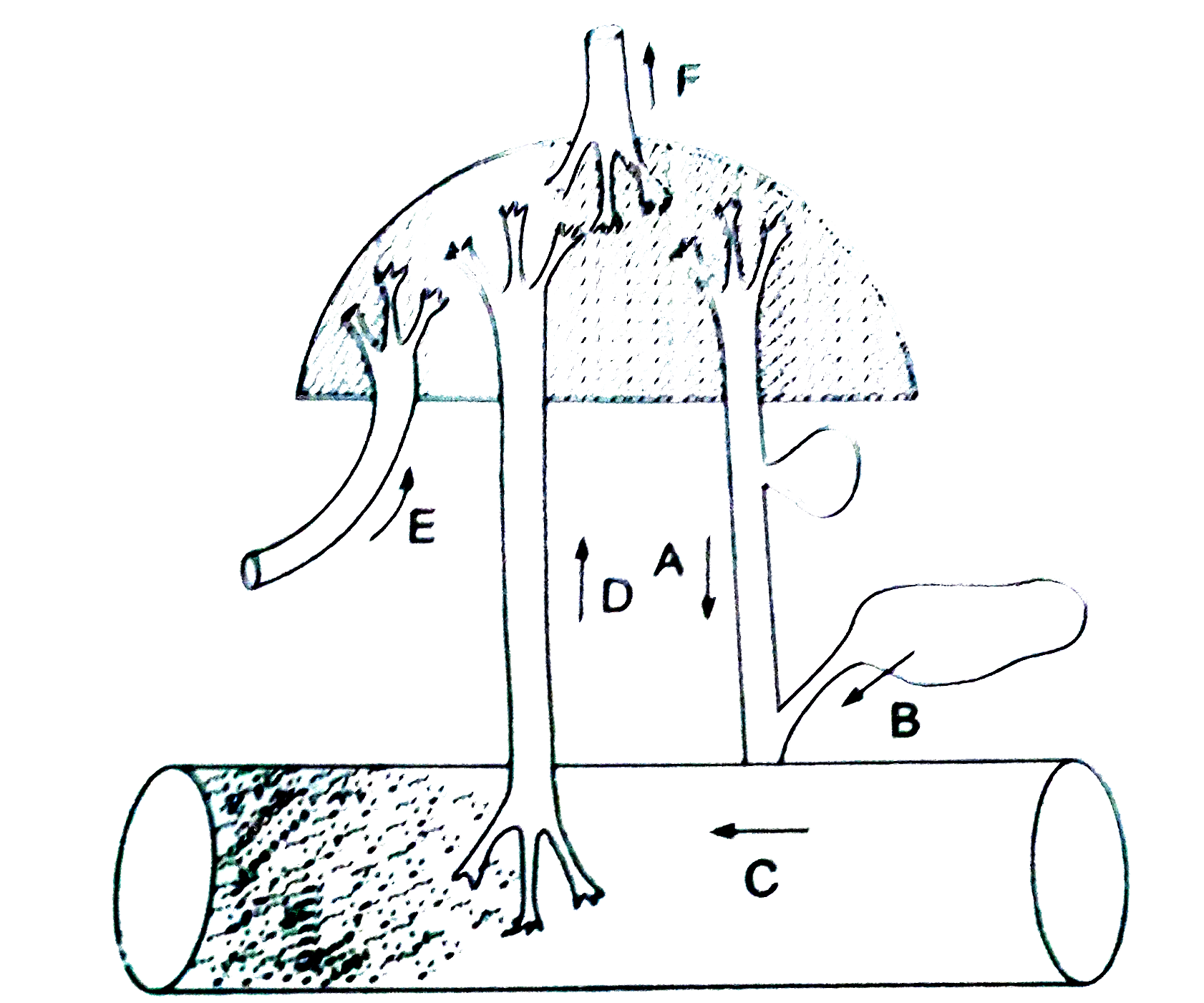Following components are haploid, diploid or triploid (A) oosphere (B) microsphere (C ) sunergids (D) antipodals (E ) oospore (F) nucellus (G) placenta (chalaza) (I) endosperm (J) tapetum
Which of following groups show the correct sequence of the ascending order of ploidy in ovule/seed ?
C,B,D
A,E,I
E,F,G
J,E,H
The correct Answer is:B
To determine the correct sequence of ascending order of ploidy in the components of an ovule/seed, we first need to classify each component as haploid (1n), diploid (2n), or triploid (3n). Here’s the breakdown:
1. Oosphere (A): This is the female gamete in plants and is haploid (1n).
2. Microsphere (B): This term is not commonly used in standard plant biology; it may refer to a microspore, which is also haploid (1n).
3. Synergids (C): These are two cells that accompany the egg cell in the embryo sac and are haploid (1n).
4. Antipodals (D): These are three cells located at the opposite end of the embryo sac and are also haploid (1n).
5. Oospore (E): This is formed after fertilization when the oosphere is fertilized by a male gamete, resulting in a diploid (2n) structure.
6. Nucellus (F): This is the central part of the ovule and is diploid (2n).
7. Placenta (G): This is the tissue to which the ovules are attached and is also diploid (2n).
8. Endosperm (H): This is formed after fertilization when two polar nuclei fuse with a male gamete, resulting in a triploid (3n) structure.
9. Tapetum (I): This is the layer of cells that provides nourishment to the developing pollen grains and is diploid (2n).
Now, we can summarize the ploidy levels for each component:
- A (Oosphere) - Haploid (1n)
- B (Microsphere) - Haploid (1n)
- C (Synergids) - Haploid (1n)
- D (Antipodals) - Haploid (1n)
- E (Oospore) - Diploid (2n)
- F (Nucellus) - Diploid (2n)
- G (Placenta) - Diploid (2n)
- H (Endosperm) - Triploid (3n)
- I (Tapetum) - Diploid (2n)
Now, we can arrange these components in ascending order of ploidy:
1. Oosphere (A) - 1n
2. Microsphere (B) - 1n
3. Synergids (C) - 1n
4. Antipodals (D) - 1n
5. Oospore (E) - 2n
6. Nucellus (F) - 2n
7. Placenta (G) - 2n
8. Tapetum (I) - 2n
9. Endosperm (H) - 3n
From the above, the correct sequence of ascending order of ploidy in ovule/seed is:
- A (Oosphere) → E (Oospore) → H (Endosperm)
Thus, the correct option is B: A, E, I.
2. Microsphere (B): This term is not commonly used in standard plant biology; it may refer to a microspore, which is also haploid (1n).
- A (Oosphere) - Haploid (1n)
- B (Microsphere) - Haploid (1n)
- C (Synergids) - Haploid (1n)
- D (Antipodals) - Haploid (1n)
- E (Oospore) - Diploid (2n)
- F (Nucellus) - Diploid (2n)
- G (Placenta) - Diploid (2n)
- H (Endosperm) - Triploid (3n)
- I (Tapetum) - Diploid (2n)
1. Oosphere (A) - 1n
2. Microsphere (B) - 1n
3. Synergids (C) - 1n
4. Antipodals (D) - 1n
5. Oospore (E) - 2n
6. Nucellus (F) - 2n
7. Placenta (G) - 2n
8. Tapetum (I) - 2n
9. Endosperm (H) - 3n
- A (Oosphere) → E (Oospore) → H (Endosperm)
Topper's Solved these Questions
Similar Questions
Consider the following statements (i-iv) each with two blanks .
(i) Jellyfish exhibits (A) symmetry whereas cuttle fish exhibits (B) symmetry .
(ii) Incomplete gut is present in (C ) whereas complete gut is present in (D)
(iii) Closed circulatory is present (E ) whereas open circulatory system is present in (F)
(iv) Flatworms are (G) whereas roundworms are (H)
Which one of the following options , gives the correct fill - ups for both the blank numbers one of the above statements ?
View SolutionHow many chromosomes are present in each of the following with respect to Maize plant respectively (a) Leaf epidermal cell (b) Antipodal cell (c) Endosperm cell (d) Generative cell (e) Egg cell (f) Megaspore (g) Microspore mother cell
View SolutionWhich of the following feature(s) is/are exclusive in angiosperms :-
(A) Seed
(B) Double fertilization
(C) Female gametophyte
(D) Presence of flowers
(E) Formation of endosperm
(F) Presence of vessels and companion cells
Tick the right one :-
View SolutionState the energy changes in the following cases while in use:
(a) loudspeaker (b) a steam engine
(c ) microphone (d) washing machine
(e) a glowing electric bulb (f) burning coal
(g) a solar cell (h) bio-gas burner
(i) an electric cell in a circuit (j) a petrol engine of a running car (k) an electric iron (l) a ceiling fan
(m) an electromagnet
View SolutionWhich of the following structures present in a gymnospermic seed represent the future sporophytic generation? (a) Perisperm (b) Tegmen (c) Radicle (d) Endosperm (e) Plumule (f) Testa. Mark the correct option
View SolutionDefine the following terms :
(a) Cell (b) Cell organelle
(c) Mitosis (d) Meiosis
(e) Evolution (f) Crossing -over
(g) Karyokinesis (h) Diploid
(i) Interphase
View SolutionWhich of the following are not compounds?
(a) Chlorine gas (b) Potassium chloride (c) Iron (d) Iron sulphide (e) Aluminium (f) Iodine (g) Carbon (h) Carbon monoxide (i) Sulphur powder
View SolutionThe diagram given below [Fig] shows how things get to and from the liver. They are labelled as A, B, C, D, E and F. Which one of the following labellings is correct

Choose the correct option
View SolutionThe diagram given below shows how things get to and from the liver. They are labelled as A, B, C, D, E and F. Which one of the following labellings is correct

Choose the correct option
View SolutionClassify the following into elements, compounds and mixtures.
(a) Sodium
(b) Soil
(c ) Sugar solution
(d) Silver
(e ) Calcium carbonate
(f) Tin
(g) Silicon
(h) Coal
(i) Air
(j) Soap
(k) Methane
(l) Carbon dioxide
(m) Blood
View Solution
